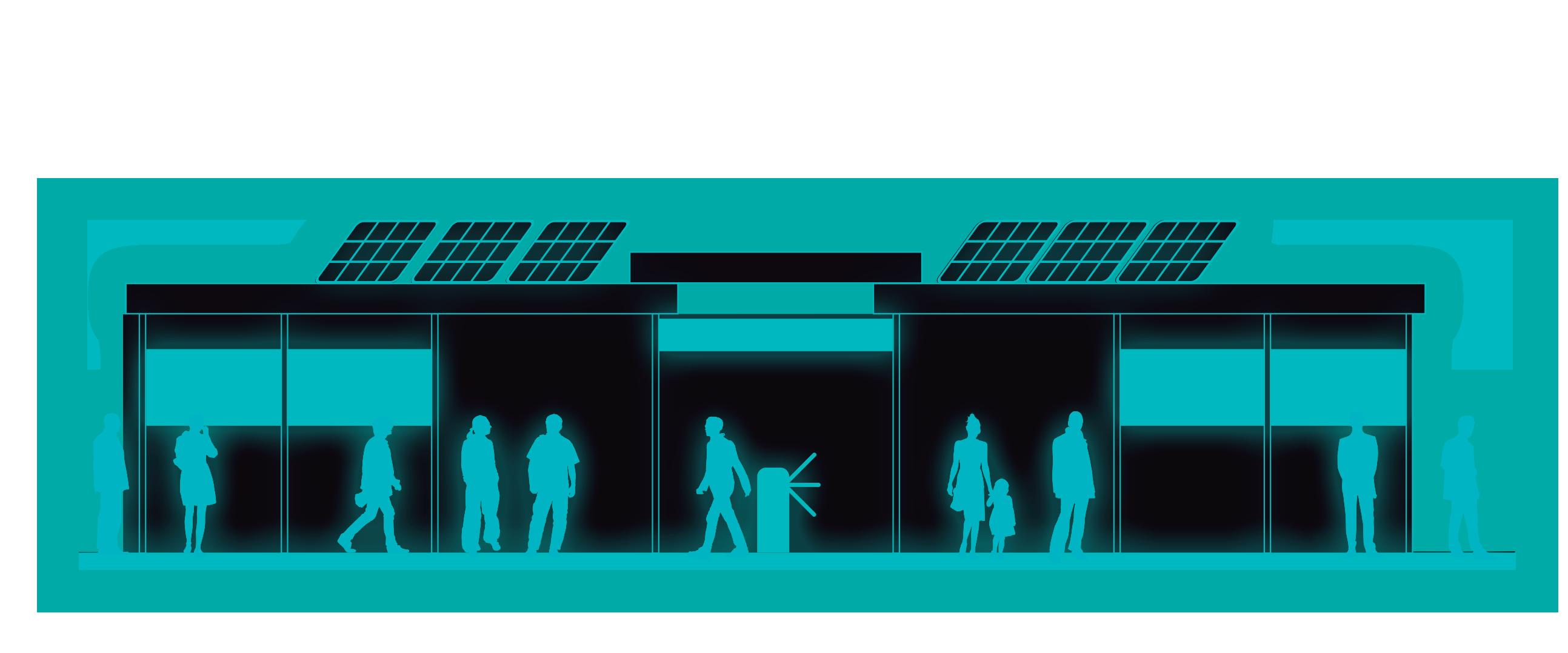ENERGY
FROM THE PRESENT
AND
THE FUTURE

ENEL X BREAKING BARRIERS IN PUBLIC ELECTROMOBILITY IN SANTIAGO.



FROM THE PRESENT
THE FUTURE

ENEL X BREAKING BARRIERS IN PUBLIC ELECTROMOBILITY IN SANTIAGO.



ARRIVED IN CHILE WITH ENEL X.

Today, traveling in a public transport bus is a silent, refreshing and non-polluting experience that provides passengers with wifi, smartphone chargers and more comfort.

SINCE DECEMBER 2018, thousands of passengers have enjoyed the benefits of travelling the first electric electric bus corridor in Latin America. That runs through Avenida Grecia in Santiago de Chile.
This privilege is possible thanks to the arrival of 100 new electric buses, product of the alliances between Enel X, Metbus and BYD. The buses are entirely functional through the streets of Santiago and have improved the quality of life of thousands of people, transforming Chile into the second country with the biggest fleet of electric buses, right after China.
It’s calculated that over 250.000 passengers have used the electric buses by now in areas such as Lo Prado, Estación Central, Santiago, Ñuñoa, Peñalolén and Providencia. These people know, emphasize and appreciate the advantages of transport that has zero emissions and has changed the way in which Chile moves.
The experience aboard an electric bus is nothing like regular diesel-fueled transport and it has been demonstrated that users appreciate this new standard of quality. Evasion of payment has decreased significantly since the new fleet has an approval rate of 20%+ over the regular ones, which in turn makes the user preserve them more.
Many of these benefits made the government decide and announce that the totality of the buses in the Capital will be replaced for electric ones, which represents about 6.500 units by 2040 and Enel X has the capacity to supply the electric and charging infrastructure to facilitate the massification of electric public transport in Santiago and other Regions.

With focus placed on the users so their public transport experience is improved, Enel X implemented a new standard on smart bus stops, by building 40 new ones in Peñalolén.
This project included repairing the existing spaces in place, improving luminosity and safety in those areas, which also incorporated modal exchange and technology that modernizes the infrastructure.
LED lighting, bicycle parking, informative screens, photovoltaic systems and monitoring station for radiation, temperature and other info, are part of the new commodities in these bus stops, that will also include USB charging ports and wifi connection.









The development and execution of new infrastructure is vital for the correct functioning of new technologies that will operate Santiago’s public transport system. This is why Enel X built the first electric terminal in Peñalolén, equipped with 63 charging stations for the buses and solar parking spots, structures designed to support photovoltaic panels that generate electric energy through renewable sources, allowing them to contribute to the consumption of both the buses as well as the electric terminal. Additionally, another 37 charging stations will be available in the other side of the buses final stop: the electric terminal of Maipú.
In these electric terminals includes CONTROLS OF SMART CHARGING, unique in the world, that have the capacity to administrate effectively and in real time the energy supply for the buses, optimizing their electric consumption.
These advances in the public transport system have opened up doors to transform Avenida Grecia into the FIRST ELECTRIC CORRIDOR FOR SUSTAINABLE BUSES IN LATIN AMERICA. The objective is that this corridor, that goes through several important areas in Santiago, functions entirely with 100% electric trips, becoming a permanent environmental way for the city while improving user’s lives.
DEPOT METBUS PEÑALOLEN 80 kW
63 chargers

3,0 MW

276 kWh battery EACH BUS

Real-time monitoring of the existing georeferenced chargers is maintained for the analysis of current load and the side effects that could be generated.
Analysis / measurement of multiple electrical variables is incorporated to limit future issues in the simultaneous charging of electric buses.
Continuous work is carried out in the analysis and tests necessary to check the robustness of the loading system.
The emphasis is a charge profile focused on load management and operational reliability.
> The goal is to reduce 6 MW to 3 MW.





100% ELECTRIC TRANSPORT SYSTEM IS POSSIBLE
